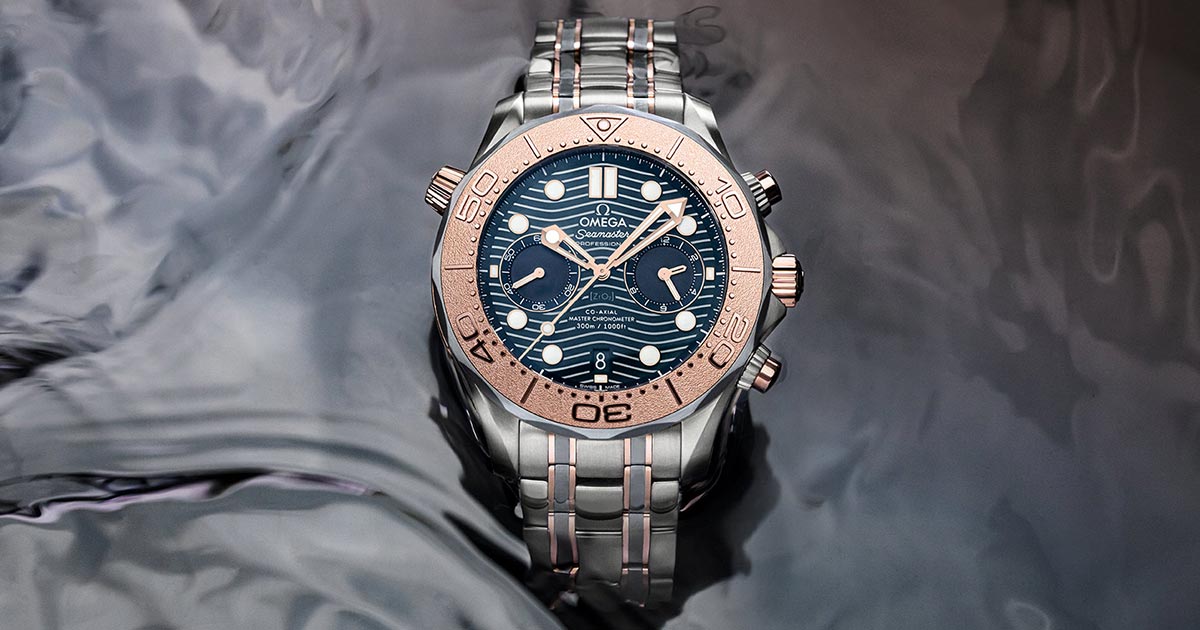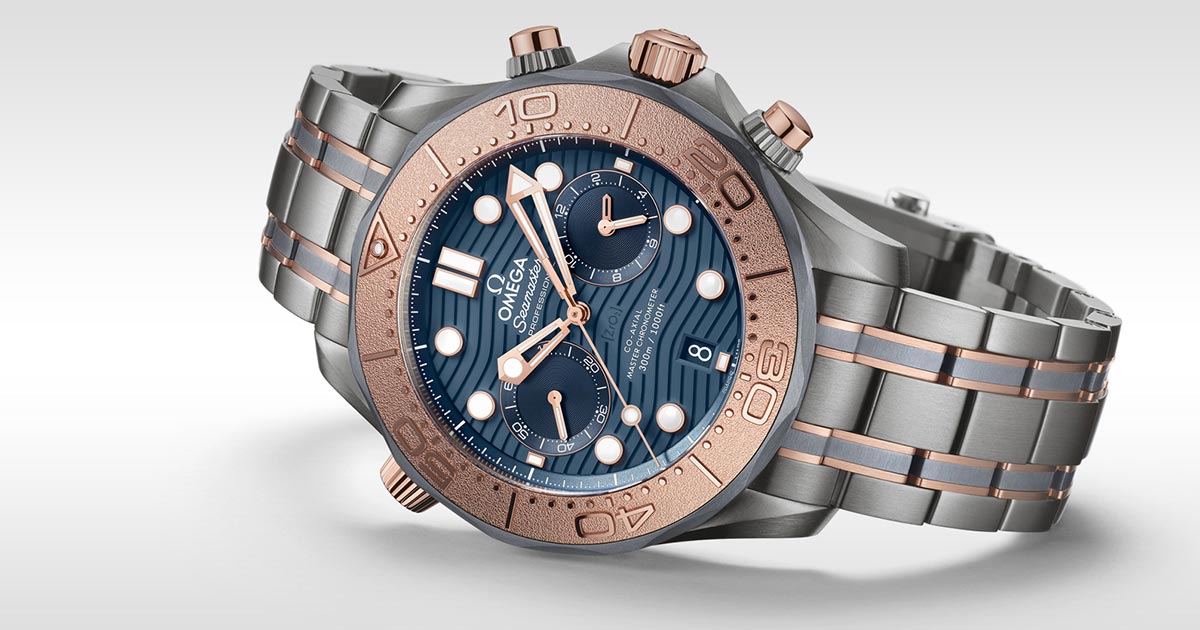
Omega Seamaster Diver 300m Chronograph in Sedna, Titanium & Tantalum Review
Join us for a fascinating Diver 300m Chronograph model #210.60.44.51.03.001 review.
Every so often, Omega does something so different that it catches my eye in a way that no other watch that preceded it does. Firstly, I have seen many Seamasters since the Diver 300m became a thing in 1993 and especially since the world’s favorite MI-6 agent wore one in the 1995 James Bond 007 film called GoldenEye. For the record, each one of them was worthy of praise.
However, after watching the collection evolve and seeing so many of them over the past few decades, it starts to look like just a bunch of very subtle cosmetic changes and mechanical improvements drip-fed into production.
Nevertheless, every so often, one watch will come out that will completely blow me away and get me out of my seat screaming “Bravo!” to give Omega a well-deserved standing ovation. Today we will review one of those watches together.
Omega Seamaster Diver 300m Chronograph in Sedna, Titanium & Tantalum Review
The first thing that struck me when looking at this watch was that instead of a Sedna gold case, it has a combination of a titanium case with a laser-ablated 18kt Sedna gold bezel inlay. It has a rugged look around the diving scale where the numerals, dot minute markers, and indexes are all polished but on a textured background. It is almost as if they took Sedna gold and laser blasted it with a rough texture pattern to add a little rough around the edges look to what would otherwise be a very shiny and classy looking 18kt rose gold bezel ring. A closer look at the bezel on this watch shows that the bezel itself is actually made out of Tantalum and is a slightly darker and slightly bluer hue of grey than the Titanium from which the rest of the case is crafted.
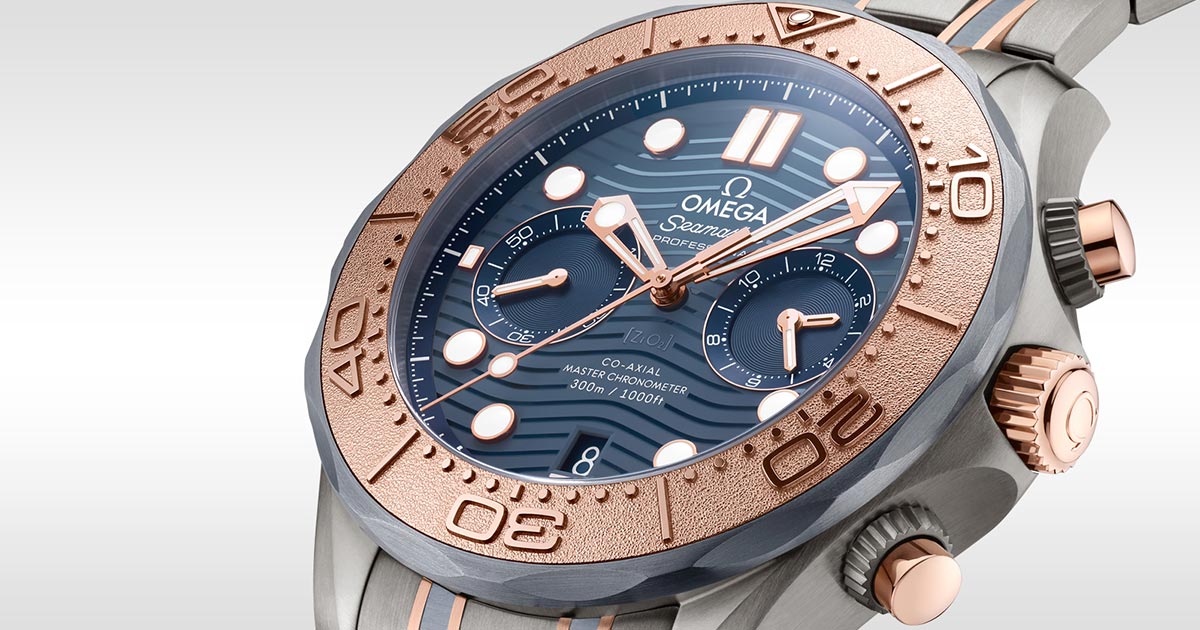
In my search for the perfect watch, I have seen a laser-ablated bezel on a Seamaster watch before, most recently on the (non-chronograph) 25th-anniversary, limited edition of the Seamaster Diver 300m watch that had a light grey dial with the same wavy pattern, and yes, it did look good. Perhaps the thing that made this newer model stand out even more than the grey dial version is the extra polished stopwatch buttons on the right side of the dial of the chronograph model.
On second thought, no. It is not the pushers that did it for me. It is 100% the blue dial with the laser engraved wavy pattern that adds an even sharper contrast to the textured Sedna Gold bezel ring. The Zr02 also engraved on the dial indicates that the dial uses a Zirconium Oxide ceramic material.
Everything in this watch that uses Sedna gold or a rose gold-tone, including the partially skeletonized hands, the rose gold rims of the dot and index hour markers, the bezels, the pushers, even the fine outline around the chronograph and small seconds sub-dials. All of it absolutely pops when contrasted against the darker blue dial.
The next thing that really drew me in was the use of 3 different materials in the case construction. Normally, we would see a single material or perhaps a two-tone combination. This model has a tri-tone combination of materials. It uses super durable, yet lightweight titanium for most of the case and bracelet. The center links in the bracelet use Tantalum and Omega’s proprietary Sedna gold a slightly redder hue of rose gold.
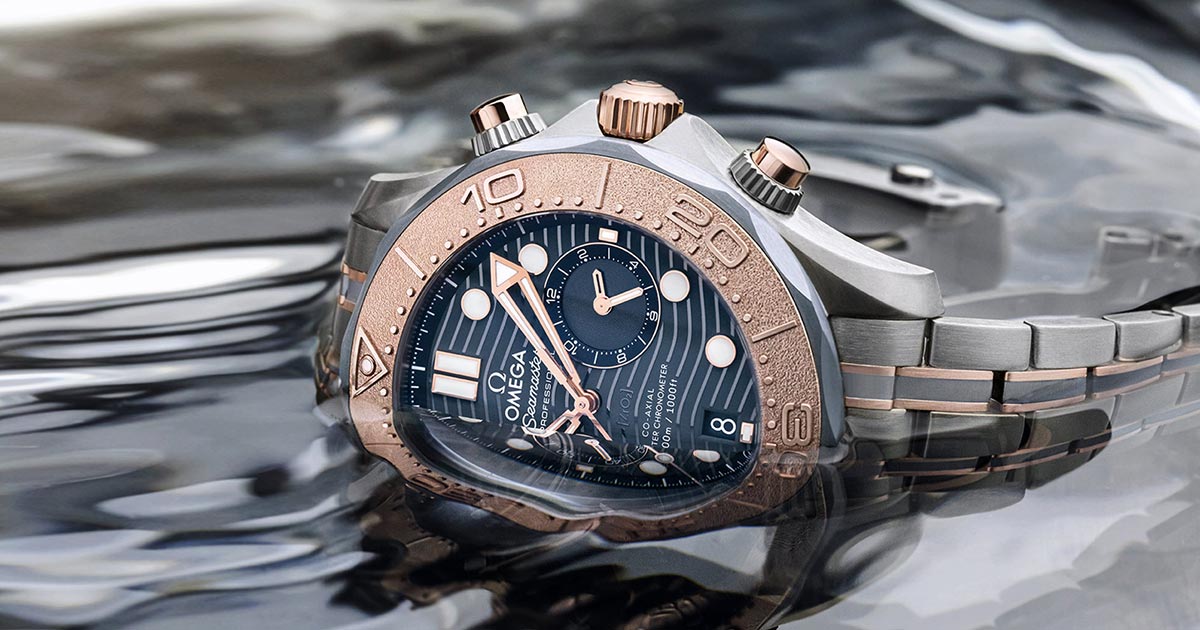
The interesting thing about this link and color configuration is how they have vertically brushed grey Titanium outer links, and horizontally brushed slightly darker grey Tantalum links in the center that are framed on either side with polished Sedna gold links.
Why on earth did they use Tantalum? It is a metal that is rare but also named after a villain from Greek mythology! It’s most likely because of the bluish hue of this grey highly durable material since it would certainly help bring out the blue dial and less about the mythology.
Nevertheless, Omega has used mythological names before. Sedna, for example, is an Inuktitut name derived from Inuit mythology and is the Goddess of the sea and marine animals in Inuit mythology. How very coincidental that they use this material in a Seamaster watch. Sedna is also and perhaps not so coincidentally, the name of a planetoid on the outskirts of our solar system. Seeing as the watches that made Omega so famous are the Omega Speedmaster Moonwatch and the Omega Seamaster, it makes sense to choose such a versatile name for this watchmaker’s proprietary gold alloy. But I digress.
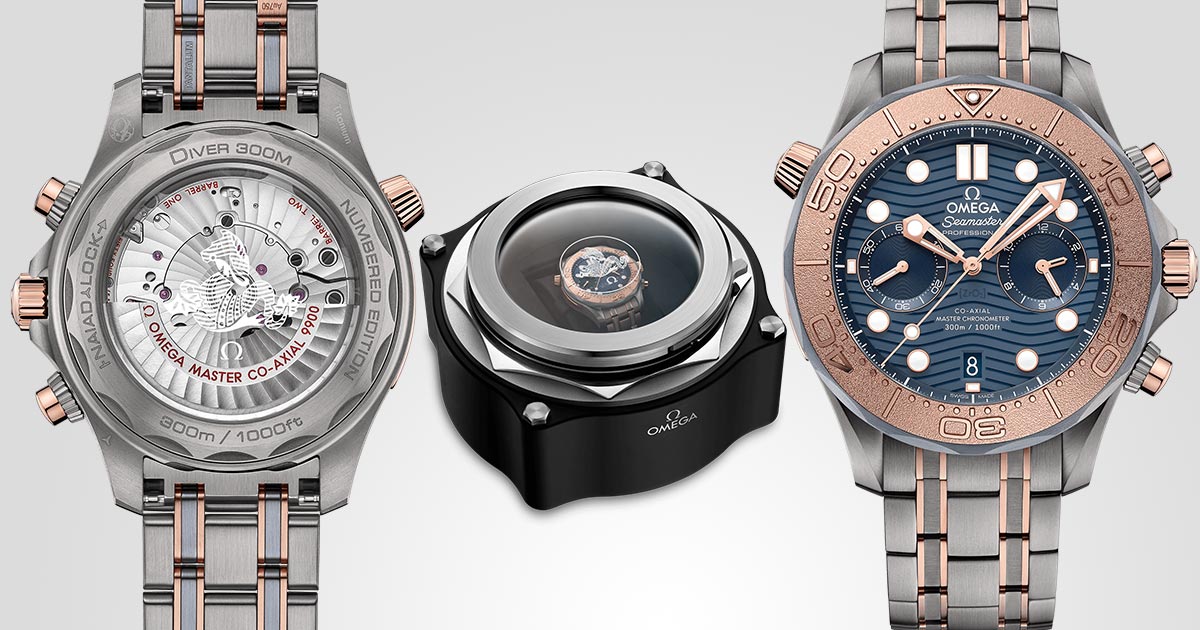
Compared to even the slightly older models of the Seamaster Chronograph, including the Seamaster Co-Axial Chronograph, the newer models in this collection have significantly better accuracy and a new designation of Master Chronometer indicating that the watch movement went through the standard COSC testing and acquired a prestigious Chronometer designation before going to a second lab called METAS where it went through significantly more testing to get an even higher accuracy rating and ensure ample water resistance and magnetic resistance up to 15,000 gauss. So, to translate, this watch has a movement that is now more capable of protecting itself against the elements that would normally destroy it.
The sapphire crystal on the case back is engraved with a Seamaster sea horse image and paint-filled in white. Through this transparent sapphire crystal, you can see that this timepiece is powered by the 54-jewel Omega Master Chronometer caliber 9900. This automatic movement has a resonance of 25,200 vibrations per hour and a power reserve of 60 hours thanks to its twin barrels mounted in series.
Summary: Is this a good watch? This is an excellent watch. It is lightweight, durable, comfortable, aesthetically stunning, and had great wrist appeal. It has a beautiful dial with a date window and a chronograph (stopwatch) function. More importantly, it is not the exact same watch that everyone and their uncle is wearing and it's guaranteed to turn heads. Looking to get one? Click here.
